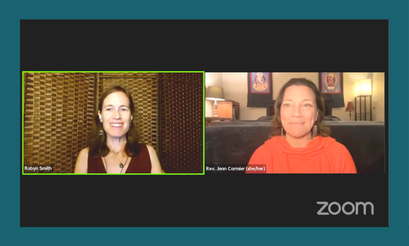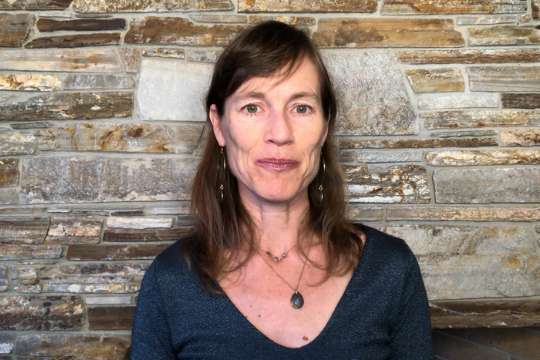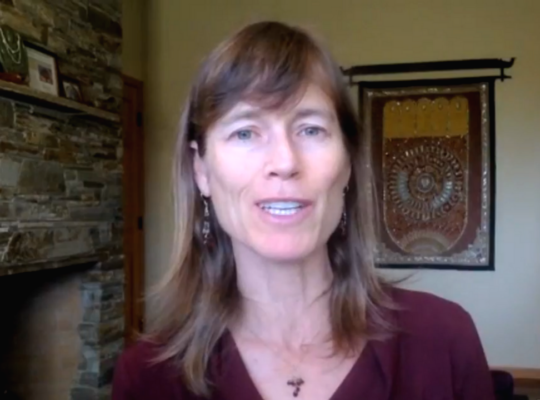Let’s look briefly at attachment theory and attachment styles and then we will talk about how that affects us now in our adult relationships. Attachment theory says that how we bonded to our caregivers in the first one to three years of life affects greatly how we show up in our adult relationships. To be brief about that, there’s different ways that we can attach and it’s based on how our caregivers treated us and even how we were treated in the womb.
Types of Attachment Styles
The Anxious Attachment Style
- In general, if your caregiver was attentive showing care, love, concern, a desire to attend to you and to help you, then you’re more likely to have secure attachment. You’re going to have a sense that you are being cared for and things are good and you can rely o your caregivers. There’s a security you get from that.
- If your caregivers weren’t so attentive, if they were neglectful, if they were not present, or even worse if they were abusive, then what happens is your have a sense of insecurity. You get a sense that you cannot rely on your caregiver. What you tend to do is retreat to protect yourself because you feel like it’s not safe; they’re not going to help me; I have to pull back and I have to not be needy. I have to not hurt because my needs are not going to get met.
- If your caregiver was somewhat inconsistent in their caregiving for example: they were attentive sometimes and neglectful other times, maybe they would halfway attend to you and then leave you, you’re more likely to feel a sense of insecurity and anxiety about whether they are available because they are unreliable.
In the second example (neglectful caregiver) they were reliably unavailable but in this third example (inconsistent caregiver) they’re unreliably available. You don’t know, “are they going to show up this time or are they not?” You tend to feel more tense and scared about whether you’re going to get your needs met.
Fast forward to your adult relationships and these patterns tend to carry forward. If you have an insecurity, you tend to:
- not trust your partner or close friends who really care for you
- you tend to look for signs that they don’t care
- you tend to be more needy, more grasping
- needing more approval
- need to be seen and cared for
- you need proof and evidence that they want you
- and evidence that they love you.
A general insecurity of, “I’m not loveable,” “I’m not worthy,” “I’m not cared for,” will drive this anxiety, then you will project that onto a partner or friend looking for proof that they don’t care for you. You might demand that they show up in a certain way to prove they care for you and it creates a lot of tension in the relationship.
Avoidant Attachment Style
With the avoidant attachment style, that person tends to retreat or withdraw because they feel like they can’t rely on anybody. They don’t really trust that people are there for them. They want connection, they want intimacy but they are too scared they are going to be hurt because they were hurt before by being neglected or abused in some way.
The problem comes where there’s this dynamic, that is really common in relationships, where a person who’s got more anxiety or more of the anxious attachment style will draw to them someone who’s more in the avoidant style of attachment. As you can imagine, that creates a lot of tension and drama in the relationship because the anxious person needs that someone to show up and really care, attend to them and prove their love and the avoidant person tends to need a lot of space, they tend to withdraw when tension gets high and then the anxious person feels more anxious.
The anxious person tends to get angry that the person is not tending to them. They tend to get more needy, more attached and more demanding. Then the avoidant person tends to withdraw even more because they’re feeling that anger towards them that’s reminding them of their abuse or neglect and they feel scared. What I want to say is these patterns can go on and on and on.
The problem is, it so much seems like it’s the other person and what they are doing. For example:
- “You shouldn’t be avoiding me.”
- “You’re not taking good care of me.”
- “You don’t tend to me when I’m sick.”
- “You don’t respond to my texts.”
- “You don’t listen to me enough when I talk to you.”
- “You don’t give me your eye contact.”
For sure those things would really help and it would be nice if everyone would do that, but there’s a way that we tend to draw that person to us if we’re anxious. It’s hard to explain why. When we have these unconscious patterns, it’s like we’re looking for what’s familiar so we can keep playing that out and keep proving our core belief that, “I’m not worthy,” or “I’m going to get abandoned,” “I’m not loveable,” or “People don’t really care for me,” and so we pick a relationship where we can continue that dynamic.
For the avoidant person it’s kind of the same thing. If they had someone who was on them, who was criticizing them, who was demanding, who was judging, who was putting them down all the time as a child, then they might find that in the anxious person when they’re an adult.
The anxiously attached partner is often unsatisfied, nagging, blaming, criticizing for example:
- “You’re not caring for me enough.”
- “You’re not taking care of the house enough.”
- “You’re always at fault.”
- “You’re not doing it right.
The avoidant person then feels that feeling of, “Here I am getting attacked again,” and “I just want love, but I’m going to retreat because it doesn’t feel good to get attacked.” So, the dynamic continues until we start to really see that it’s not just about the behavior and the patterns of behavior, those certainly could use some improvement, but what’s more important is getting underneath the behavior to the emotions and to the beliefs under the emotions.
So, when we have a core belief like:
- “I’m not worthy,”
- “I’m not good enough,”
- “I’m going to get abandoned,”
then we bring a lot of fear into ANY relationship and we bring a lot of tension and anxiety.
Name the Fear, the Pattern and the Belief
There’s nothing wrong with having that fear and there’s a real reason that we might have that fear based on our early upbringing, as soon as we can identify that and have compassion for it, were going to relax more. And we’re also going to be able to own our contribution to the dynamic between us and our partner or friends. We’re going to realize, “Oh, I’m having that feeling again,” like, “I’m going to get abandoned,” or “You don’t love me,” or “You don’t really care for me,” or “You’re going to leave me,” or whatever.
The more we can name the pattern or the belief driving it, and the more we can name the emotions that are stirred up by whatever happens in the day to day, the more we can deconstruct and disconnect the pattern, breaking it apart. It’s not just about the communication pattern or the communication style, it’s also really about those core beliefs and core feelings and that is why we have to get underneath those.
When I work with individuals and couples, we’re peeling off that outer layer and getting to the core of:
- “What’s going on here that I keep finding myself feeling this way?”
- “In every relationship I keep feeling like people don’t really like me.”
- “They’re doing it wrong.”
- “They’re going to leave me.”
- “I need approval or affirmation.”
- “I need confirmation that you love me.”
- “I need to know you will stay with me forever more and never leave me.”
Of course, no one can give you that. You can’t promise “till death do us part,” and you can’t promise that you will always love and be there because stuff happens. We change and we evolve. But the anxious person wants that promise, they want to know everything’s going to be okay. They want YOU to make it okay, they want to put that on somebody else and that’s a lot of pressure on somebody else and on a relationship
So ultimately, for the anxious person, if that’s you or your partner, what needs to happen is you need to find that security within you, not just from outside of yourself (i.e.: in your relationship trying to get a commitment, trying to get certain behaviors) but from inside yourself (i.e.: I am enough, I am worthy of love, I am loveable, I am likeable, I will be okay) finding that security from the inside. That is key and then the relationship isn’t so tense anymore. That has been a part of my journey. I’d say I was somewhat anxiously attached. What’s cool is that we can all learn to get more and more secure and create secure attachments. Thank goodness for that!
What I’ve noticed in my 20 years now in my relationship with my husband is that I was more anxious in the beginning. Not so much anxious that he would leave me, I felt more secure in that way, but just anxious about our future, anxious about me being enough, anxious in other friendships especially it would show up for me as they didn’t really like me and this insecurity I would have. Then I would blame and criticize and who wants to be around that?
Nobody likes blaming and criticism and no one wants their love questioned. It’s ok if you need to question it because you don’t trust, but just to know that the important work is not making your partner change because, good luck with that, most people aren’t going to change for you. The most important work is that inner work that we work on ourselves. We work on our own insecurities, we work on selflove and our commitment to ourselves, our self-care and there’s lots of ways this can show up.
I’m not here to give you a full training on that because that’s a much bigger topic and something that I do work on in my Rock Your Relationship group which is coming up in the spring. So, I hope you’ll stay tuned for that or my private coaching. I’m pretty full now, but if you are interested you should let me know for sure.
Final Thoughts
So, that’s the gist of what I wanted to share. It’s a little nutshell version of how we might get at these attachment styles that carry on into adulthood and how they create drama and arguments and you know, big blow ups in our relationships when we’re blaming the other person for acting a certain way which is really based on a real kind of core wound that we have that gets easily triggered when someone maybe gives you a certain kind of look or a certain kind of tone, or certain kind of body language and it triggers something early in you and you get out of proportion in your reaction and it seems like it’s their fault.
The more we can do our inner work on what this trigger is really about, this core wound and when we’re in a partnership or friendship that’s trusting and open and we can share those wounds, the more the other person can understand us and then they can meet us there and help assure us about their love or their commitment as best they can. They can also share their core wounds so we can understand them
The more we each get in touch with what these core wounds are and what these hurt feelings are really about, that are driving the behavior of blaming or criticizing or abandoning or avoiding, whatever it is were doing, the more we can share those wounds, that helps the other person to see our truth and take responsibility for them and have compassion for them. Then the more ease we will create in our relationships, the more understanding and the more ease and flow we’ll have between us which ends up with more security or the other way around, more security leads to that ease and flow. So, you’ve got to work on that inner security first and not demand it from your partner. Yes to that!
So, thanks for being with me here tonight. If you are watching on YouTube, please take a moment and follow me on YouTube, subscribe, feel free to leave a comment. I do have a free gift that I like to offer. It’s my, How to Avoid the Three Biggest Relationship Mistakes and it’s a lot of what we’re talking about here and I break it down for you. You can get a copy of that at my website https://www.consciousthrivingrelationships.com/home and you’ll see a direct way to sign up for that free.
It’s just a quick little three-page guide on how to work through some of the biggest relationship mistakes, which we’ve been touching on here. And then you’ll be on my email list and if you want to stay there, you’ll get more tips from me, you’ll get tips about upcoming trainings, free trainings that I have coming up and other guest interviews that I do that are pretty juicy.
So, thanks for being here. I love sharing this with you. Please invite friends to watch if you’re in my Facebook group, invite your friends to the Healthy Relationship Sisterhood or if you’re on YouTube with me, go ahead and share the link to my channel and we’ll spread the love and get more people having healthy and thriving relationships. Bye for now everybody!







